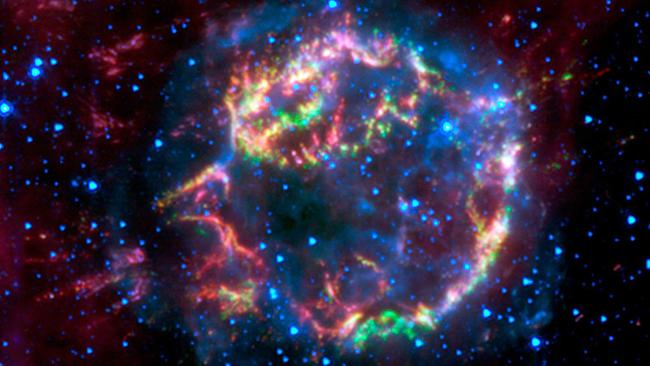Scientists observe supernova shockwaves from exploding star for the first time
IT MAY have been sheer luck, but what scientists observed will give us fresh insight into the life cycle of stars.

FOR the first time scientists have been able to observe and record a shockwave generated by a star’s collapsing core.
The explosion of two ageing stars was observed by an international team of astronomers in a project that including researchers from the Australian National University.
The discovery, which would published in the Astrophysical journal, would give scientists a fresh insight into the life cycle of stars, said study co-author Brad Tucker from ANU.
The supernova shockwave generated by the explosion was viewed using the Kepler Space Telescope, named after Johannes Kepler who discovered the last supernova observed by the naked eye in our own galaxy.
“This is the first time we’ve seen this in the normal visible colours, and we now know it happens,” Dr Tucker told the ABC.
“The fundamental way we believe that core collapse happens is related to this shockwave happening. So the physics has been around... for decades and we’ve finally now been able to physically examine and test what’s going on.”
Until now, scientists have only been able to witness a supernova by collecting X-rays emitted from the exploding star.
A video released by NASA shows the shockwaves of the smaller star of the two, said to be more than 270 times the radius of the sun and 750 million light years away from earth.
Because the shockwave only lasts for a period from a few hours to a day or so, it is very difficult to observe the phenomena in visible light as opposed to X-ray.
It just so happened that scientists fluked this one.
“They were actually looking at another exploding star and one happened to go right off in the exact patch of sky in the exact moment they were looking at it. It was the definition of luck,” Dr Tucker said.
The second exploding star scientists observed did not emit signs of a shockwave which researchers posited may have been due to the immense size of the star, boasting a radius a whopping 400 times greater than the Earth’s sun.



